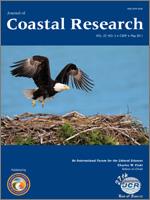Invasion by alien plants has negative effects on coastal dunes. Monitoring local spread of invasive species depends on long-term data with sufficient spatial resolution. Bayesian state-space models are a new method for monitoring invasive plants based on unbalanced permanent-plot data. The method allows separation of process and sampling variance, thus enabling ecological predictions with a known degree of uncertainty. The method is applied for the invasive shrub Rosa rugosa (Japanese rose) in Danish fixed dunes. The probability of observing R. rugosa increased significantly from 0.18 to 0.28 during the period 2004–2007. The species was found in all Danish coastal regions, albeit slightly less common in northern Denmark. We discuss the advantages and limitations of using Bayesian state-space models for monitoring and predicting plant invasions using presence–absence data.
How to translate text using browser tools
1 May 2011
State-Space Modeling Indicates Rapid Invasion of an Alien Shrub in Coastal Dunes
Christian Damgaard,
Bettina Nygaard,
Rasmus Ejrnæs,
Johannes Kollmann
ACCESS THE FULL ARTICLE

Journal of Coastal Research
Vol. 27 • No. 3
May 2011
Vol. 27 • No. 3
May 2011
Denmark
invasive alien plant
monitoring
Permanent plots
Rosa rugosa
time-series analysis




